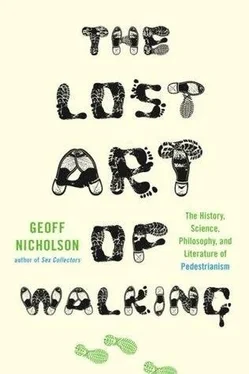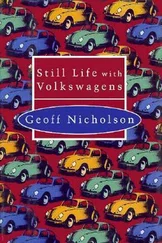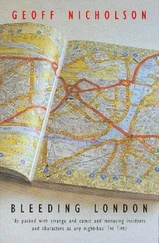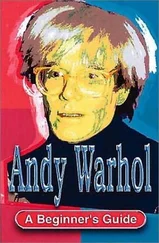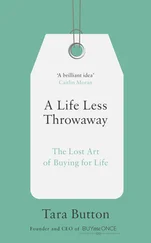Johnson’s plan to hit the road might not solve all his problems. In another of his songs, ‘Stop Breaking Down’, he says that every time he walks down the street some pretty mama starts ‘breaking down’ with him, and he wishes she’d stop.
Johnson, like most blues players, frequently uses the rhythm known as the ‘blues shuffle’, the very basic ‘dum da dum da, dum da dum da’ pattern at the heart of the classic twelve-bar blues. It’s always struck me as a misnomer. The blues shuffle sounds more sprightly and purposeful than I expect a shuffle to be, especially if it’s combined with a ‘walking bass’ line.
The walking bass isn’t confined to the blues — it’s in all kinds of pop and jazz music. Since one note is played for every beat of a 4/4 bar it’s certainly a rhythm you can walk to, as opposed to, say, the ¾ time of the waltz that makes you want to dance, or Stravinsky’s polyrhythms that make you want to celebrate the rite of spring. Karlheinz Stockhausen claimed to hear the march of the jackboot in any recognizable time signature.
Walking bass has something in common with ‘stride piano’, the style of jazz playing where the player’s left hand ‘strides’ up and down the piano, alternating bass lines and chords. Some of these lines may ‘walk’ regularly at the pace of a basic beat, but this being jazz, there’ll be arpeggios, syncopation, and the introduction of mixed time signatures. You might be able to walk to this but you’d look darned odd.
One of the greatest stride pianists is Fats Domino, a man who’s written at least three songs with the word walking in the title. The best known of them, called simply ‘I’m Walking’, was, according to legend, written after his car broke down and a fan saw him making his way on foot to the nearest garage and yelled, ‘Look, it’s Fats Domino walking’. Fats went home and turned his misfortune into a song. I so want this story to be true.
In song, as in life, there are a lot of people who’d much rather be riding than walking. And you might think that country-and-western music, with its fondness for pickup trucks and eighteen-wheelers, would find walking a particular humiliation, but it appears not. Here walking is often synonymous with honesty and plain dealing, whether it’s Faron Young’s ‘Walk Tall’, Keith Urban’s ‘Walkin’ the Country’, or Johnny Cash’s ‘I Walk the Line’.
Rodney Crowell sings a song called ‘I Walk the Line (Revisited)’, which is about the joys of hearing Johnny Cash sing ‘I Walk the Line’ on the radio, but it’s a car radio and Crowell is driving in his ‘49 Ford, an irony the song seems not to notice. But it wouldn’t be country music at all if there wasn’t some mawkish sentiment attached to walking, as in Wayne Newton’s ‘Daddy Don’t Walk So Fast’, which is what the kid says as his daddy abandons him and walks away.
Some people reckon that Patsy Cline’s ‘Walkin’ After Midnight’, written by Alan Block and Don Hecht, is a great song of female independence and empowerment, but it strikes me as deeply problematic. On the surface it appears to be about a female protagonist who has, we don’t know how, lost her lover, and so she wanders the streets after midnight looking for him. Why she chooses this method and this time of night is left for the listener to guess, but earlier, more prudish sensibilities than ours couldn’t imagine what any woman would be doing in the streets after midnight unless she’d become a hooker, a streetwalker. Another possibility might be that having been abandoned, she’d simply lost her wits, à la Ophelia, and is walking around in a daze, looking for love in all the wrong places, but this doesn’t seem even remotely empowered.
When men sing ‘Walkin After Midnight’, as they often do, the streetwalker possibility seems much more likely. The guy searches the night for his lost love, trying to save her from a life of vice. Of course you could conceivably reverse the sexes on this scenario, too: the woman’s searching the streets because she thinks the guy’s become a hustler, but this is probably trying too hard.
Sexual role reversal plays a part in another great walking song, ‘These Boots Are Made for Walkin’’. As sung by Nancy Sinatra this does indeed sound like a song of empowerment. She’s walking over the guy and striding on to freedom. When you hear the original male version, as sung by the song’s composer, Lee Hazelwood, it becomes a particularly nasty piece of vindictive masculine domination. Hazelwood, it always seemed, was perfectly happy with that interpretation. His other compositions included ‘Rebel Walk’ and ‘The Walker’ for Duane Eddy, and ‘’She Don’t Walk on Water’ for himself and Anna Hanski.
You might think that walking is in itself too tame a subject for the full-on, balls-out, hard-rock song, and writers of rock songs seem to agree. Not wishing to appear pedestrian, they envisage fancy or extreme walking that takes place in unusual or downright impossible circumstances: on the moon (the Police), on thin ice (Elvis Costello and Yoko Ono), through walls (Steve Hackett), on locusts (John Cale), on broken glass (Annie Lennox), on sunshine (Katrina and the Waves), and, in a particularly obscure favorite of mine, through syrup (Ned’s Atomic Dustbin).
The most rock-and-roll walking song, or at least the rock-ingest song with the word walking in its title and lyrics, is surely Aerosmith’s ‘Walk This Way’. Supposedly it was inspired by the movie Young Frankenstein , in which Marty Feldman, as Igor, invites visitors to the castle to ‘walk this way’, which they do by copying his shambling, hump-backed gait. In the context of the movie it’s very funny, the silliness of the pun only adding to the comic mayhem. By the time of the Aerosmith song the pun has pretty much disappeared. It becomes a song about being sexually initiated at the hands of a cheerleader, and the lyrics don’t require a very close reading, but the gist of it is that the girl is telling the guy to follow her round to the back of the bleachers, not to imitate her cheerleader moves. Either way, it doesn’t sound like a very long or challenging walk.
The fact that Run-DMC did a fantastic hit version of ‘Walk This Way’ is enough to make us realize that rappers can be walkers, too, though not very far or very fast, that would scuff up their immaculate sneakers, but whenever you have a lot of pimps you’re likely to have a lot of people doing Tom Wolfe’s ‘pimp roll’. There’s Snoop Dogg ‘walking down the street, smoking, smoking, sipping on gin and juice’, Cypress Hill’s ‘Stoned Is the Way of the Walk’, Lil Wayne’s ‘Walk It Off’, Xzibit’s ‘Get Your Walk On’.
The walk Xzibit is referring to here is the Crip Walk, originally part of gang culture. Back in the day Crips would make heel-and-toe or V-shaped movements with their feet to spell out letters and words on the ground, often after they’d committed a crime. One word they tended to spell out was Blood , the name of their gang rivals, and then they’d ‘erase’ the word by scrubbing their feet all over it. This does sound wonderfully baroque. It’s not a walk that would get you from A to B, but it was certainly a walk that could get you into a lot of trouble if you did it in front of the wrong people: Crips believed it was for Crips only. But eventually it became mainstream. Ice-T Crip-walked on TV, and since then all and sundry have been at it. You can find tutorial videos on YouTube, a lot of dance moves have been added, and it’s now often known as Clown Walking. It’s also been said that it looks like hopscotch on crack.
♦
References to walking are more at home in the apparently safer territory of the show tune and the standard. Walking here tends to be an innocent activity from an earlier, gentler, less sexualized age. And so we have songs like ‘Walkin’ My Baby Back Home’, ‘Winter Wonderland’, or ‘You’ll Never Walk Alone’.
Читать дальше
